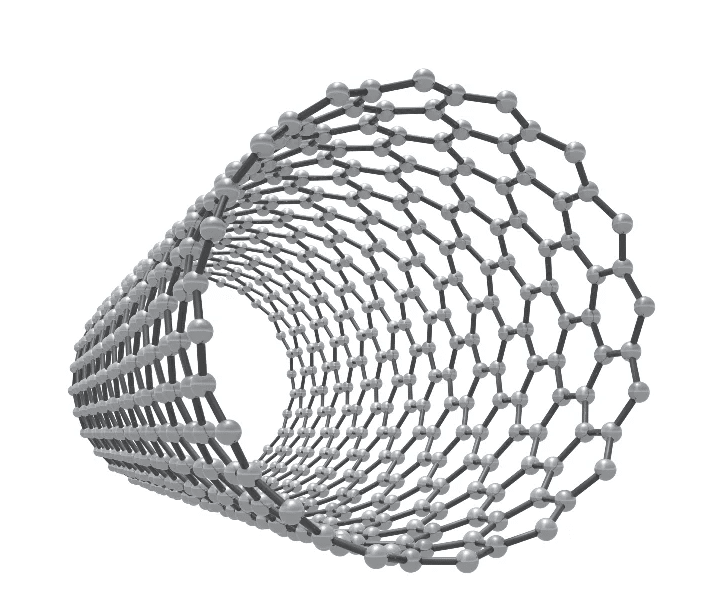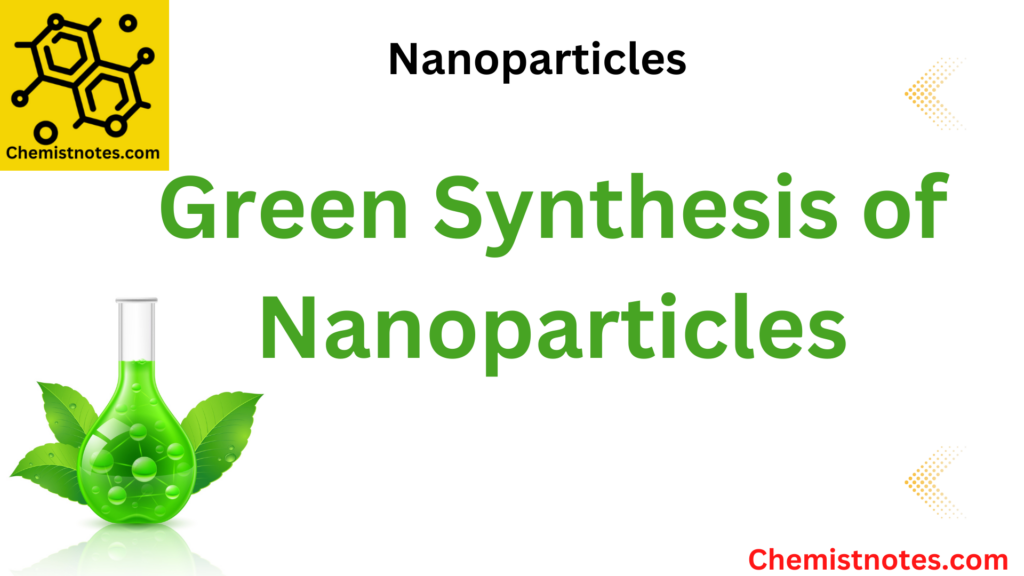Table of Contents
ToggleCarbon nanotubes (CNT), cylindrical-shaped allotropes of carbon, are nanomaterials that possess unique optical, electronic, chemical, and mechanical properties. It is made up of nanometer-sized seamless cylinders composed of stacked cylindrical graphitic sheets (also known as graphene) and is mostly produced on a large scale by chemical vapor deposition techniques. Every carbon atom in a carbon nanotube, also known as a buckytube, is covalently bound to three other carbon atoms, forming a hexagonal network that forms the tube. Nanotubes are cylindrical structures rather than the sphere-like shape of buckyballs. Carbon nanotubes are tough, but unlike buckyballs, they are not brittle. When released after being bent, they will revert to their former shape.

Carbon nanotubes are divided into two categories: single-walled carbon nanotubes (SWCNT), with a diameter of less than 1 nanometer (nm), and multi-walled carbon nanotubes (MWCNT), with diameters up to more than 100 nm and made up of multiple concentrically interconnected nanotubes. They can be as long as a millimeter or even several micrometers.
Properties of carbon nanotubes
- Carbon nanotubes (CNTs) have high mechanical strength and are both electrically and thermally conductive.
- Carbon nanotubes are the stiffest and strongest materials discovered so far on basis of elastic modulus and tensile strength.
- They are stronger than steel and as rigid as a diamond.
- Carbon nanotubes have a very high melting point since each carbon atom is strongly covalently bound to three other carbon atoms.
- The carbon nanotubes’ density is one-fourth that of steel.
- Regular hexagons make up the crystalline structure of carbon nanotubes.
- They are exceptionally resistant to corrosion as, like graphite, they are highly chemically stable and can withstand almost any chemical reaction unless they are subsequently exposed to high temperatures and oxygen.
Types of carbon nanotubes
Single-walled Carbon nanotubes
Single-walled carbon nanotubes abbreviated by SWCNT are seamless cylinders of graphite (also known as graphene) with a diameter of the nanometer range. Armchair and zig-zag are a couple of examples of single-walled CNT. Some of the properties are listed below:
- Exist in 1-D structure.
- Single-walled carbon nanotubes have a diameter and length of 2 nm and 2 micrometers, respectively.
- They have exceptional strength, and distinct electrical characteristics, and are effective heat conductors.
- have a wide range of applications in the fields of materials science like as electronics, nanotechnology, and optics.
Multi-walled Carbon nanotubes
Multi-walled nanotubes, also known as MWNTs, are made up of several layers of graphite rolled inward that resemble tubes. This particular sort of nanotube has two diameters, the outer diameter, and the inner diameter. Some of the properties are listed below:
- Multi-walled Carbon Nanotubes have an outer diameter of 2–20 nm and an inner diameter of 1-3 nm, respectively.
- Multi-walled Carbon Nanotubes are about 5 to 6 micrometers in length.

Application of carbon nanotubes
Because of their unique characteristics, carbon nanotubes offer a wide range of possible applications. They can be utilized in a variety of applications, including electronics, textiles including water- and abrasion-resistant fabric, thermal conductivity-based sensors, and many more. They are excellent candidates for a variety of applications due to their superior thermal and electrical conductivity qualities. Some of the remarkable applications are discussed below:
- Attractive characteristics of carbon nanotubes (CNTs) include their high surface-to-volume ratios, improved conductivity & strength, biocompatibility, simplicity of functionalization, optical features, and more.
- CNTs have been employed successfully in pharmacy and healthcare to adsorb or synthesize a variety of therapeutic and diagnostic drugs attributed to their large surface area.
- Carbon nanotubes are used in thin-film electronics, actuators, coatings, water filters, automobile components, boat hulls, sporting goods, and electromagnetic shields.
- CNTs are attractive as drug delivery and biosensing operating systems due to their unique size, and chemical, optical, electrical, and structural properties, which have made them useful in the treatment of a wide range of diseases.
- The diameter of the carbon nanotubes can be employed to filter out particles that are too large to pass through. Smaller ions in a solution can also be captured using this method.
- CNTs are used to treat breast cancer tumors.
- Nanotubes are utilized in aerospace and airplanes to reduce the overall load on the system as a whole.
- Due to their exceptional mechanical, electronic, thermal, barrier, and chemical properties, carbon nanotube-mediated nanocomposites have gained a lot of attention as promising replacements for more traditional composite materials.
- For a variety of electrochemical research as well as applications involving chemical and biological sensing, carbon nanotubes are frequently utilized as electrodes.
- Carbon nanotubes are highly attractive for catalysis due to their extraordinarily high surface area.
Carbon nanotubes Video
References
- Zhang C, Wu L, de Perrot M and Zhao X (2021) Carbon Nanotubes: A Summary of Beneficial and Dangerous Aspects of an Increasingly Popular Group of Nanomaterials. Front. Oncol. 11:693814. doi: 10.3389/fonc.2021.693814
- Rao, Rahul; et al., 2018. Carbon Nanotubes and Related Nanomaterials: Critical Advances and Challenges for Synthesis toward Mainstream Commercial Applications. ACS Nano, (), acsnano.8b06511–. doi:10.1021/acsnano.8b06511
- Murjani, B.O., Kadu, P.S., Bansod, M. et al. Carbon nanotubes in biomedical applications: current status, promises, and challenges. Carbon Lett. 32, 1207–1226 (2022). https://doi.org/10.1007/s42823-022-00364-4.






